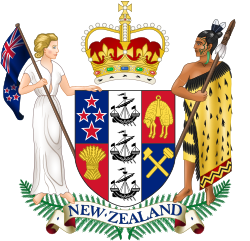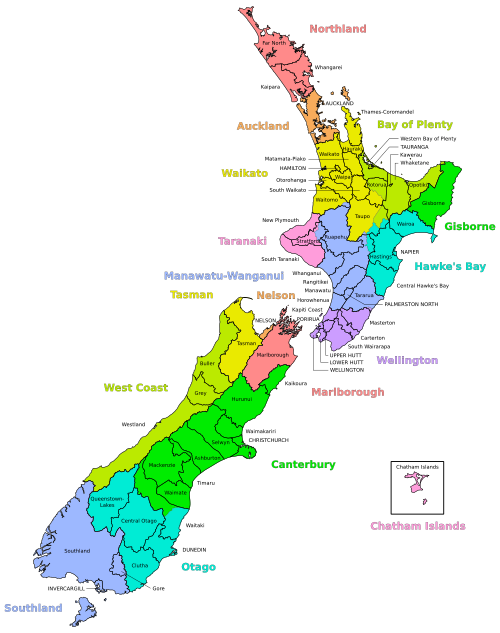United councils
In 1978, legislation was passed enabling the formation of regions that had united councils. Twenty regions were designated, excluding the Auckland and Wellington areas. For most of the country this was the first time there had been a regional level of government since the abolition of provinces in 1876. Councillors were not elected directly – they were appointed from the various territorial local authorities (TLAs) within the region.
The only responsibilities mandated by the legislation were coordination of civil defence and development of a regional plan, although the constituent TLAs could agree on additional responsibilities at the point of formation of each united council. For example, in a number of cases the united council took responsibility for the allocation of revenue from regional petrol taxes.
The united councils were based in the facilities of the largest TLA in the region and largely dependent on the TLAs for resources. They were allowed to levy rates but in most cases had minimal operating budgets (below $100,000 per annum). The notable exception was Canterbury, where the united council had a number of responsibilities. Only one united council undertook any direct operational activity – a forestry project in Wanganui. [8]
List of united councils| Region | When formed | Levy rates (1982/83) |
|---|
| Northland | January 1980 | $118,000 |
| Thames Valley | July 1980 | $46,000 |
| Waikato | October 1980 | $36,000 |
| Bay of Plenty | August 1979 | $17,000 |
| Tongariro | November 1979 | $50,000 |
| East Cape | August 1979 | $16,000 |
| Hawke's Bay | December 1983 | – |
| Taranaki | February 1979 | $60,000 |
| Wanganui | May 1979 | $81,000 |
| Wairarapa | November 1978 | $33,000 |
| Manawatu | May 1981 | 0 |
| Horowhenua | June 1980 | $47,000 |
| Nelson Bays | November 1978 | $84,000 |
| Marlborough | December 1978 | $30,000 |
| Canterbury | May 1979 | $605,000 |
| West Coast | November 1978 | $32,000 |
| Aorangi | 1983 | – |
| Coastal / North Otago | April 1983 | – |
| Clutha / Central Otago | November 1980 | $33,000 |
| Southland | May 1979 | $88,000 |
|
Source: Summary of the Functions and Activities of United Councils. Dept of Internal Affairs, 1984.



